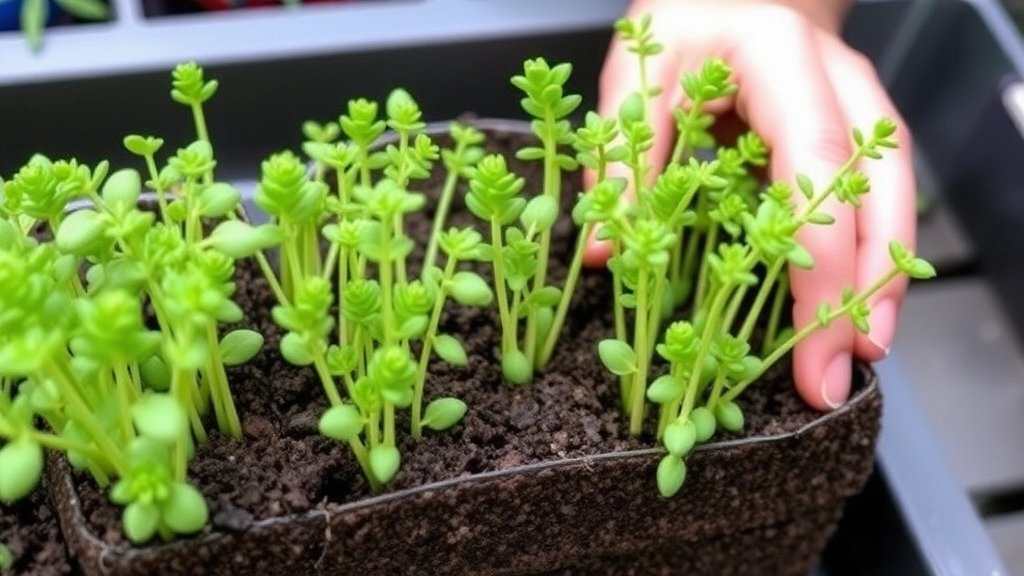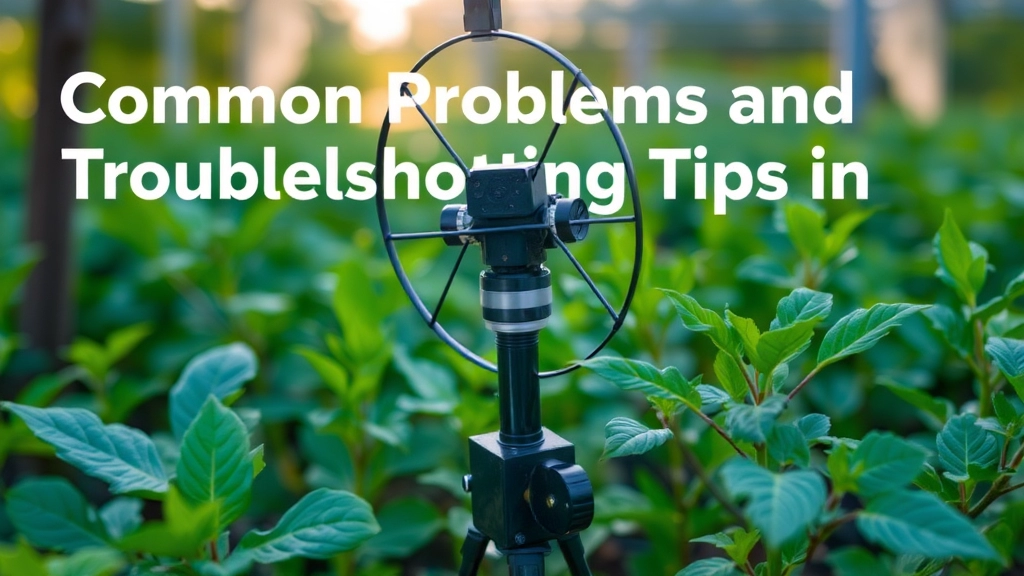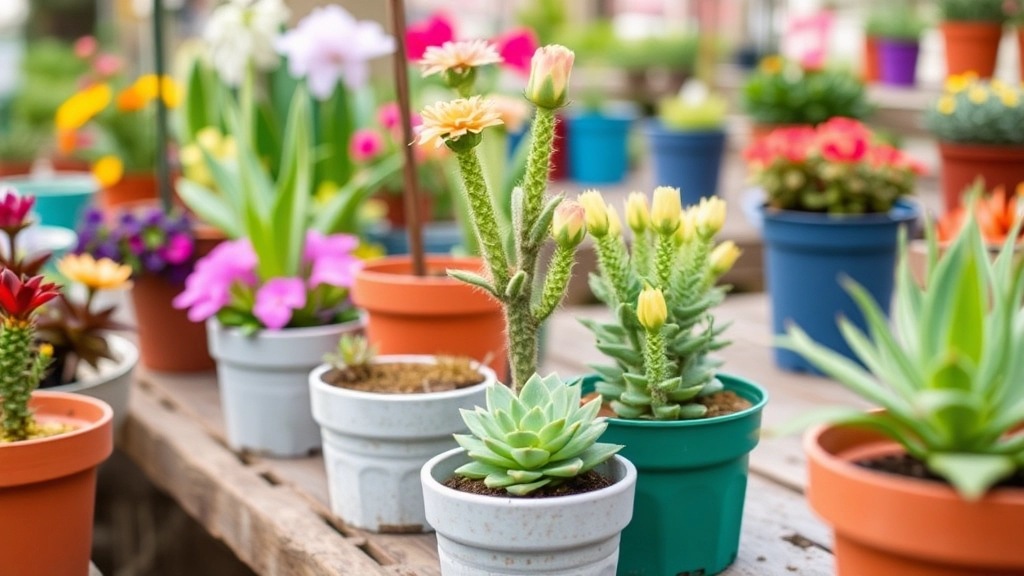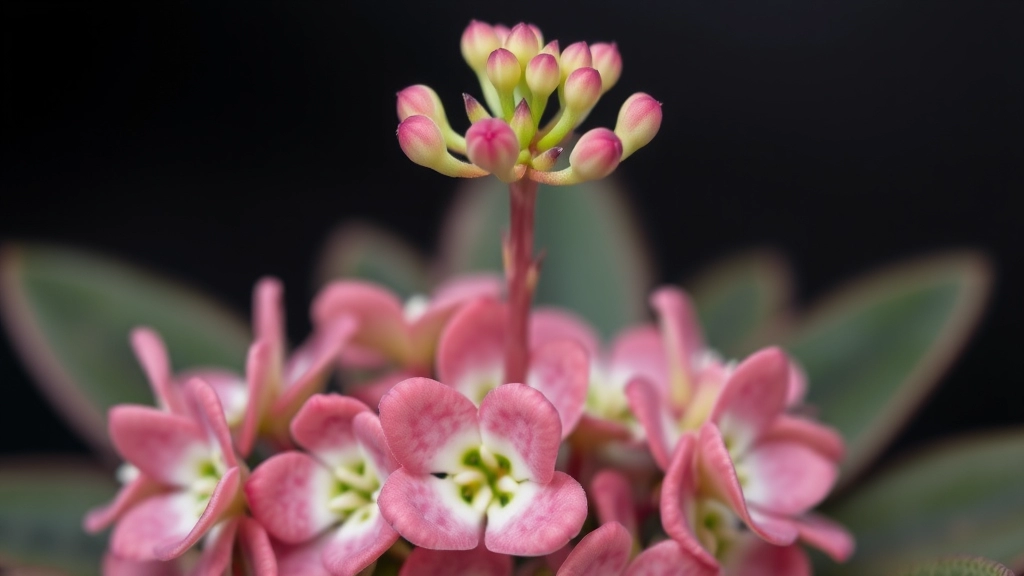Unlock the Secrets of Kalanchoe Mother of Thousands Propagation
Are you ready to unlock the secrets of kalanchoe mother of thousands propagation? Get ready for a green-thumbed adventure that’s as exciting as it is rewarding! In this comprehensive guide, we’ll dive deep into the world of these fascinating succulents, exploring everything from identifying the perfect plantlets to mastering the art of propagation. Whether you’re a seasoned plant parent or a curious beginner, you’ll find a wealth of tips, tricks, and insider knowledge to help you grow a thriving kalanchoe family.
From soil selection to watering techniques, light requirements to pest management, we’ve got you covered. You’ll learn how to navigate common pitfalls, troubleshoot issues, and nurture your plants from tiny offshoots to mature beauties. So, roll up your sleeves and get ready to transform your space into a lush kalanchoe paradise. Let’s embark on this green journey together and discover the joy of watching your mother of thousands multiply before your eyes!
Identifying Plantlets for Propagation
Hey there, plant enthusiasts! Let’s chat about the Mother of Thousands – a plant that’s basically the overachiever of the succulent world. If you’ve got one, you know what I’m talking about. These guys are like the Oprah of plants: “You get a baby! You get a baby! Everyone gets a baby plant!”
But here’s the thing: not all those little plantlets are ready for their solo career. So, how do we spot the ones that are primed for stardom?
Size Matters
First up, size. You’re looking for plantlets that are at least 2-3 cm long. Anything smaller, and they’re still in the “I live with my parents” phase.
Leaf Check
Next, peep those leaves. You want to see at least two sets of leaves that are fully formed. If they’re looking more like green blobs, they’re not quite there yet.
Root Readiness
Here’s a cool trick: some of these overachievers will start growing roots while still attached to mama. If you spot these, jackpot! They’re basically screaming, “I’m ready for my own pot!”
Colour Cues
Keep an eye on the colour too. Healthy plantlets should be a vibrant green. If they’re looking pale or yellowish, they might be the plant equivalent of a couch potato – not quite ready for the big move.
The Detachment Test
Give them a gentle nudge. If they’re easily detached from the mother leaf, that’s nature’s way of saying, “Fly, little one, fly!” Or in this case, “Grow, little one, grow!”
Remember, propagating Mother of Thousands is like running a plant nursery on easy mode. These guys are so eager to grow, they’ll probably start multiplying before you’ve even finished reading this. But picking the right plantlets? That’s your ticket to a thriving succulent squad.
So, next time you’re eyeing up those tiny leafy babies, you’ll know exactly which ones are ready to leave the nest. Happy propagating, folks!
Choosing the Right Soil and Potting Medium
Ever wonder why your Mother of Thousands isn’t thriving? It might be the dirt.
Let’s break it down:
- These succulents need well-draining soil. Period.
- Forget regular potting mix. It’s too heavy.
Your best bet? A mix of:
- Cactus soil (about 2/3)
- Perlite or pumice (1/3)
Why this combo? It’s all about balance.
The cactus soil gives nutrients, while perlite stops water from hanging around too long.
Pro tip: Add a handful of small pebbles at the bottom of your pot. Extra drainage insurance.
Avoid:
- Garden soil (too dense)
- Moisture-retaining mixes (root rot city)
Remember, Mother of Thousands likes it dry. Wet feet? Not her thing.
Got clay soil in your garden? No worries. Just mix in some sand or grit.
Bottom line: Well-draining soil = happy plant = less work for you.
Choosing the right soil isn’t rocket science. But it’s the foundation for a thriving Mother of Thousands. If you’re looking for more specific care tips, check out our guide on Kalanchoe daigremontiana, also known as Mother of Thousands. For those interested in other unique Kalanchoe varieties, the Kalanchoe beharensis felt plant is another fascinating species to explore.
Preparing Plantlets for Propagation
Alright, let’s dive into prepping those tiny Mother of Thousands babies for their big move. Trust me, I’ve been there – staring at a leaf covered in miniature plantlets, wondering, “How the heck do I turn these into full-grown plants?” Well, I’ve got you covered.
Size Matters
First things first, size is crucial. You want plantlets that are at least 2-3 cm tall. Any smaller, and they might not have the juice to survive on their own. It’s like sending a toddler to college – they’re just not ready yet.
The Great Detachment
Here’s where it gets fun:
- Gently pinch the plantlet at its base
- Give it a slight twist
- Pop! It should come off easily
If it’s putting up a fight, it’s probably not ready. Don’t force it – you’re not trying to win a tug-of-war here.
Root Check
Now, take a look at those roots. Ideally, you want to see some tiny root nubs. No roots? No worries. These little guys are survivors and can often root even without them.
Drying Time
Here’s a pro tip: let your plantlets dry out for a day or two after detachment. Why? It helps heal that little wound where it was attached to mama. Think of it as putting a plaster on a cut.
Prepping for Planting
Before you stick them in soil:
- Give them a once-over for any damage
- Remove any dead or yellowing bits
- If you’re feeling fancy, dip the base in rooting hormone (but it’s not a must)
The Waiting Game
Patience is key here. These little ones need time to adjust. Don’t expect them to shoot up overnight – they’re not magic beanstalks.
Remember, preparing plantlets for propagation is all about giving them the best start in life. It’s like prepping your kids for their first day of school – you want them ready to face the world (or in this case, the pot) on their own.
Next up, we’ll dive into the nitty-gritty of actually planting these little green babies. Stay tuned – it’s going to be soil-tastic!
Planting Techniques for Mother of Thousands Plantlets

Let’s dive into the nitty-gritty of planting these little guys.
First things first, you’ve got your plantlets ready to go. Now what?
Here’s the deal:
- Prep your pots:
- Use small pots with drainage holes
- Fill ’em with well-draining cactus or succulent mix
- Planting time:
- Make a small hole in the soil
- Gently place the plantlet in, roots down
- Cover the roots with soil, but keep the leaves above ground
Pro tip: Don’t bury the plantlet too deep. It’s not shy, it wants to be seen!
- Spacing matters:
- If you’re planting multiple, give ’em some elbow room
- About 2-3 inches apart should do the trick
- After planting:
- Give ’em a light water
- Place in a spot with bright, indirect light
Remember, these little guys are tough. They don’t need much fuss.
The key? Don’t overthink it. Mother of Thousands plantlets are pretty chill.
Just give ’em the basics, and they’ll do their thing.
Got questions? Hit me up in the comments. Let’s chat planting techniques!
Optimal Light and Temperature Conditions for Growth
Let’s talk about getting your Mother of Thousands plantlets the perfect light and temp setup. Trust me, it’s not rocket science, but it can make or break your propagation game.
Light: These little guys are sun-lovers, but they’re not beach bums
- Bright, indirect light is the sweet spot
- 4-6 hours of direct morning sun won’t hurt
- Avoid harsh afternoon rays – they’ll scorch the leaves faster than you can say “ouch”
Pro tip: If you’re growing indoors, a south-facing window is your best bet. No good windows? No worries. Grab a grow light and you’re golden.
Temperature: Think Goldilocks – not too hot, not too cold
- Ideal range: 16-24°C (60-75°F)
- Can handle a bit cooler at night, but keep it above 10°C (50°F)
- Heat waves over 30°C (86°F)? Time to find a cooler spot
Here’s the deal: Mother of Thousands is pretty chill about temps, but extremes are a no-go. Too cold? Slow growth. Too hot? Crispy leaves.
Real talk: I once left my plantlets on a windowsill during a heatwave. Let’s just say they looked more like Mother of Crispy Bits by the end. Learn from my mistakes, folks!
Seasonal changes:
- Summer: Might need to dial back the direct sun
- Winter: Bump up the light if days get short
Remember, these plants are tough cookies, but they’re not mind readers. Keep an eye out for signs they’re not happy:
- Stretching towards light? They’re saying “Feed me, Seymour!” (More light, please)
- Leaves turning yellow or brown? Ease up on the sun, champ
Bottom line: Nail the light and temp, and you’re halfway to Mother of Thousands mastery. It’s all about finding that sweet spot and sticking to it. Trust your gut, watch your plants, and you’ll be propagating like a pro in no time.
Watering Guidelines for Newly Planted Plantlets
Let’s talk about watering your Mother of Thousands babies. It’s not rocket science, but get it wrong and you’re in for a headache.
Here’s the deal:
- Start with slightly moist soil, not soaking wet.
- Water when the top inch of soil feels dry.
- Don’t let water sit in the saucer â these guys hate wet feet.
Think of it like this: you’re not trying to drown them, just keep them comfy.
I learned this the hard way. Overwatered my first batch and they turned to mush. Not pretty.
Pro tip: Use a spray bottle for the first few weeks. It’s gentler on the little ones.
Remember, these plants are succulents. They’re used to dry spells.
Too much water? You’ll see yellowing leaves and a sad, droopy plant.
Too little? The leaves will wrinkle up like my grandma’s hands.
Find that sweet spot and you’re golden.
Bottom line: Water sparingly, but consistently. Your Mother of Thousands plantlets will thank you by growing like weeds. If you’re interested in other Kalanchoe varieties, you might want to check out the Kalanchoe tomentosa, which has similar watering needs.
Managing Humidity and Air Circulation
Let’s chat about keeping your Mother of Thousands happy with the right humidity and airflow. It’s not rocket science, but it can make or break your plant’s health.
Humidity: Finding the Sweet Spot
Mother of Thousands isn’t too fussy about humidity, but it does have preferences:
- Aim for moderate humidity levels (around 40-50%)
- If your home’s dry, consider these easy fixes:
- Mist the leaves occasionally
- Place a pebble tray with water near the plant
- Group plants together to create a mini humid zone
Airflow: Keep It Moving
Good air circulation is crucial. Why? It prevents fungal issues and keeps your plant breathing easy.
- Ensure there’s space between plants
- Use a small fan on low setting if air’s stagnant
- Open windows periodically for fresh air (but watch out for cold drafts!)
Balancing Act: Humidity vs. Airflow
Here’s the tricky part – you want humidity, but not at the expense of air movement. Too much moisture + poor airflow = recipe for mould.
My top tip? Monitor your plant. If leaves look crispy, up the humidity. If you spot any mould, improve air circulation pronto.
Real Talk: My Humidity Hack
I once nearly lost a Mother of Thousands to root rot because I overdid the humidity without proper airflow. Now, I use a hygrometer to keep tabs on humidity levels and adjust as needed. It’s been a game-changer.
Remember, managing humidity and air circulation for your Mother of Thousands isn’t about perfection. It’s about finding what works in your space and for your plant. Keep an eye out, make tweaks, and you’ll nail it in no time.
Common Problems and Troubleshooting Tips in Propagation

Propagating Mother of Thousands can be a breeze, but hiccups happen. Let’s tackle the usual suspects:
Plantlets not taking root? Been there.
Here’s the deal:
- Make sure your soil’s not too wet or too dry
- Check if you’re giving them enough light (but not scorching sun)
- Patience is key â sometimes they’re just slow starters
Leaves turning yellow? Don’t panic.
It could be:
- Overwatering (the most common culprit)
- Not enough nutrients
- Too much direct sunlight
The fix? Ease up on the water, feed them a bit, or move them to a shadier spot.
Plantlets looking leggy?
They’re probably reaching for more light. Move them closer to a window or under a grow light.
Pests showing up uninvited?
- Mealybugs love these plants
- Aphids can be a pain too
Grab some neem oil or insecticidal soap. A quick spray usually does the trick.
Mould on the soil surface?
That’s a sign you’re overwatering or the air’s too humid. Let the soil dry out and improve air circulation.
Remember, every plant’s a bit different. What works for one might not work for another. Keep an eye on your little ones and adjust as needed.
The key to successful propagation? Observation and quick action. Spot a problem early, and you’re halfway to solving it. If you’re interested in learning more about specific varieties, check out our guide on Kalanchoe tomentosa varieties. For those looking to expand their collection, you might want to explore the care tips for Kalanchoe blossfeldiana hybrids.
Maintaining and Monitoring Plantlet Growth
Alright, let’s dive into keeping those Mother of Thousands plantlets thriving. It’s not rocket science, but a bit of know-how goes a long way.
Keep Your Eyes Peeled
First things first, you’ve got to play detective with your plants. I’m talking daily check-ups, folks. Here’s what to look out for:
- Leaf colour: Healthy leaves should be a vibrant green. Any yellowing or browning? That’s your plant waving a red flag.
- Growth rate: These little guys should be putting on size pretty quickly. If they’re not, something’s up.
- Root development: Peek at the soil surface. Seeing roots poking through? That’s a good sign.
The Goldilocks Zone
Mother of Thousands plantlets are like Goldilocks – they want everything just right. Here’s how to nail it:
- Light: Bright, but not scorching. Think morning sun or filtered light.
- Water: Moist soil, but not soggy. Let the top inch dry out between waterings.
- Temperature: Keep it between 15-24°C (60-75°F). They’re not fans of cold drafts or hot radiators.
Troubleshooting 101
Sometimes, things go sideways. Don’t panic – here’s what to do:
- Leggy growth? Your plant’s crying out for more light. Move it closer to a window.
- Droopy leaves? Could be overwatering. Ease up and let the soil dry out a bit.
- Slow growth? Time for a nutrient boost. A diluted, balanced fertiliser should do the trick.
The Long Game
Remember, propagating Mother of Thousands is a marathon, not a sprint. Patience is key. Keep at it, and before you know it, you’ll have more plants than you know what to do with!
Pro tip: Start a plant diary. Jot down watering dates, growth spurts, any issues you spot. It’s a game-changer for tracking what works and what doesn’t.
Maintaining and monitoring your Mother of Thousands plantlets doesn’t have to be a chore. With these tips up your sleeve, you’ll be well on your way to becoming a propagation pro. Just keep your eyes open, your care consistent, and your enthusiasm high. Before long, you’ll have a thriving jungle of your own making!
Fertilization Needs During Early Growth Stages

Hey, let’s chat about feeding those baby Mother of Thousands plants, yeah?
First off, these little guys aren’t big eaters when they’re just starting out.
They’re like that friend who’s always on a diet – they don’t need much to thrive.
But here’s the deal: a little boost can go a long way.
When to Start Fertilizing
Hold your horses! Don’t rush to feed them right away.
Give them a few weeks to settle in their new digs.
Once they’ve got some roots and new growth, that’s your green light.
What to Use
Keep it simple, mate. A balanced, water-soluble fertilizer is your best bet.
Look for something with equal parts nitrogen, phosphorus, and potassium.
Think 10-10-10 or 20-20-20. Easy peasy.
How Often?
Less is more here. Seriously.
Once a month during the growing season is plenty.
In winter? Give it a rest. Your plant’s on holiday too.
DIY Fertilizer Hack
Feeling crafty? Try this:
- Grab some banana peels
- Soak them in water for a few days
- Use that water to feed your plants
It’s like a smoothie for your Mother of Thousands. They’ll love it!
Warning Signs
Keep an eye out for:
- Yellowing leaves (too much fertilizer)
- Stunted growth (not enough)
- Brown leaf tips (oops, you overdid it)
If you spot these, ease up or ramp up accordingly.
Remember, these plants are tough cookies. They’ll forgive a few mistakes.
Just don’t go overboard, and you’ll be golden.
Happy growing, plant pals! If you’re interested in other Kalanchoe varieties, check out the Kalanchoe beharensis varieties for some unique options.
Pest and Disease Management in Mother of Thousands
Let’s talk pests and diseases, shall we? When it comes to our Mother of Thousands plants, these little buggers can be a real pain in the neck. But don’t worry, I’ve got your back.
Pesky Pests
First up, let’s tackle those annoying critters:
- Mealybugs: These cotton-like pests love to suck the life out of your plants. Spot ’em early, and you’re golden.
- Spider mites: Tiny but mighty, these guys can wreak havoc if left unchecked.
- Aphids: Small, but boy, can they multiply fast!
Quick Fix: Grab some neem oil or insecticidal soap. A good spray down usually does the trick. For a DIY solution, mix a bit of dish soap with water. Works like a charm!
Disease Dilemmas
Now, let’s chat about diseases:
- Root rot: This is a biggie. Overwatering is usually the culprit.
- Powdery mildew: Looks like someone dusted your plant with flour. Not cool.
- Leaf spot: Brown or black spots on leaves? Yeah, that’s leaf spot for you.
Pro Tip: Prevention is key. Keep your plants in well-draining soil and don’t go overboard with watering. Trust me, your Mother of Thousands will thank you.
My Go-To Strategy
Here’s what I do to keep my plants happy and healthy:
- Regular check-ups: I give my plants a once-over every week. Catch problems early, solve ’em quick.
- Clean tools: Always clean your pruning shears. Diseases love hitching a ride on dirty tools.
- Quarantine new plants: New addition to the family? Keep it separate for a bit. You don’t want it spreading trouble to your other green buddies.
Remember, a healthy Mother of Thousands is a happy Mother of Thousands. Keep an eye out for any weird changes in your plant. Spots, wilting, or just looking a bit off? Time to investigate.
By staying on top of pest and disease management, you’ll ensure your Mother of Thousands keeps thriving and producing those adorable little plantlets. It’s all about being proactive and showing your plant some love. Trust me, it’s worth it when you see those healthy, vibrant leaves!
Long-term Care and Repotting Guidelines

Let’s chat about keeping your Mother of Thousands thriving long-term.
These plants are tough cookies, but they still need some TLC.
First up, repotting. It’s not a yearly thing, but you’ll know it’s time when:
- Roots are peeking out the bottom
- The plant’s looking a bit squished
- It’s been in the same pot for 2-3 years
When repotting, go up just one size. These guys like it snug.
Choose a pot with drainage holes. Trust me, it’s a game-changer.
For soil, mix regular potting soil with some perlite or sand. They love it well-draining.
Repot in spring or early summer when the plant’s in growth mode.
Be gentle with the roots. They’re sensitive souls.
After repotting, hold off on watering for a few days. Let those roots settle in.
Now, for ongoing care:
- Prune regularly to keep it in shape
- Remove dead or yellowing leaves
- Watch out for pests like mealybugs
Remember, these plants can get leggy. If yours starts looking like a giraffe, it’s time for a trim.
Don’t forget about fertiliser. A balanced, liquid feed every month during growing season does wonders.
Lastly, keep an eye on those plantlets. They’re cute, but they can take over if you’re not careful.
With these tips, your Mother of Thousands will be living its best life for years to come. If you’re interested in other varieties, you might want to check out the Kalanchoe tomentosa varieties as well.
Preventing Invasiveness and Containment Tips
Let’s talk about keeping your Mother of Thousands in check.
These plants are like party crashers – they’ll take over if you let ’em.
Here’s how to keep things under control:
1. Indoor containment:
- Stick to indoor growing. It’s easier to manage.
- Use saucers under pots to catch falling plantlets.
- Regular cleanup is key. Don’t let those babies hit the floor.
2. Outdoor precautions:
- If you’re growing outdoors, use raised beds or containers.
- Keep an eye on spreading. These plants are sneaky.
- Consider barriers around the plant to stop plantlets from roaming.
3. Disposal dos and don’ts:
- Don’t chuck plantlets in the compost or garden waste.
- Bag ’em up and bin ’em. Better safe than sorry.
4. Pruning and maintenance:
- Snip off those plantlet-producing leaves before they drop.
- Regular pruning keeps the plant in check and looking good.
5. Education is key:
- Know your local regulations. Some places ban these plants.
- Educate your gardening mates. Spread the word, not the plant.
Remember, with great plant power comes great responsibility.
Keep your Mother of Thousands happy, but don’t let it run wild.
It’s all about balance – like most things in life, right?
FAQs about Kalanchoe Mother of Thousands Propagation
How do I identify plantlets ready for propagation?
Look for plantlets that are at least 2-3 cm long with two sets of fully formed leaves. Some may even start developing roots while still attached to the mother plant.
What’s the best soil mix for Mother of Thousands plantlets?
Use a well-draining mix of about 2/3 cactus soil and 1/3 perlite or pumice. This provides nutrients while ensuring proper drainage.
How often should I water newly planted Mother of Thousands?
Water sparingly when the top inch of soil feels dry. Use a spray bottle for the first few weeks to avoid overwatering.
What are the ideal light conditions for Mother of Thousands propagation?
Bright, indirect light is best. They can tolerate 4-6 hours of direct morning sun, but avoid harsh afternoon rays.
How can I prevent my Mother of Thousands from becoming invasive?
Grow them indoors, use saucers under pots to catch falling plantlets, and regularly clean up any fallen plantlets. If growing outdoors, use raised beds or containers and consider barriers to prevent spreading.
When should I repot my Mother of Thousands?
Repot when roots are peeking out the bottom, the plant looks cramped, or it’s been in the same pot for 2-3 years. Spring or early summer is the best time for repotting.
How do I deal with pests on my Mother of Thousands?
Common pests include mealybugs, spider mites, and aphids. Use neem oil or insecticidal soap to treat infestations. Regular inspection helps catch problems early.
References
-
Missouri Botanical Garden – Kalanchoe daigremontiana Mother of Thousands Plant Care Guide
-
University of Florida IFAS Extension – Kalanchoe Kalanchoe Species Information

